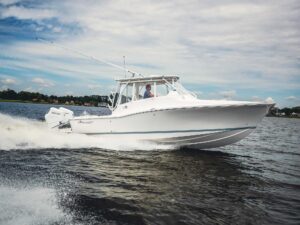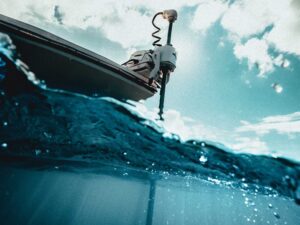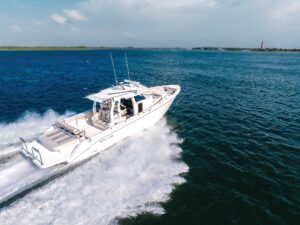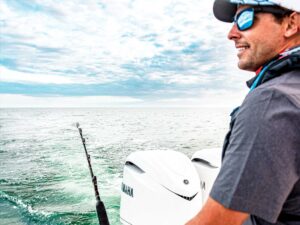Understanding Bilge Pumps
Much like your insurance policy, the bilge pump might not make the list of the most exciting things on your boat. When you need it, however, having the right bilge pump can make all the difference.
What follows is a guide on how to choose the right bilge pump for your boat. It breaks down the universe of options and relays some of the most common types and applications of boat bilge pumps.
While not every jurisdiction legally requires vessels to carry bilge pumps, they are essential pieces of boating safety equipment. Even if you plan to take a canoe out on the lake or river, you’d be well served to bring along something that serves as a bilge pump—even if it be a bucket to scoop and expel water that might enter the boat.
Types of Bilge Pumps
When it comes to bilge pumps, there are several primary categories. These include electric bilge pumps that are powered by your boat’s battery system, generator or shore power, manual bilge pumps, and automatic and non-automatic pumps.
1. Electric Bilge Pumps
Electric bilge pumps are powered by your boat’s battery system, shore power, or generator. They consist of automatic pumps that come on at regular intervals, bilge pumps that are activated by float switches, and those that are operated via a switch on a panel.
Bilge pump float switches are a common choice, and for good reason. When water rises to the level of the switch, the switch rises and activates the pump. The pump then expels water and the switch lowers back into position.
Some bilge pumps consist of an integral float switch that is built into the unit. These may be easier to install (less wiring) and are a good choice for tight bilge compartments. Other bilge pumps are wired to an external float switch. They function the same way, but the pump and the float switch are separate.
The Rule Industries 1500 GPH Electric Bilge Pump is a great all-around pump. With a flow of up to 1500 gallons per hour, it runs on 12V direct current.
Electric pumps like this may be connected to a bilge pump float switch. The Rule Industries 1500 GPH electric bilge pump is compatible with a 1 1/8-inch hose. You’ll always want to match the inflow and outflow diameter of the pump with that of the hose that you purchase.
West Marine provides a great suite of products that are commonly bought together including the float switch, heat shrink butt connectors, and bilgeflex hose options that are designed for use with the pump.
2. Manual Bilge Pumps
Manual bilge pumps consist of a lever or handle that creates suction to draw water out of the boat. Rather than utilizing your boat’s batteries to power the pump, manual pumps are operated by moving the handle or lever to create suction and expel water through an outflow valve.
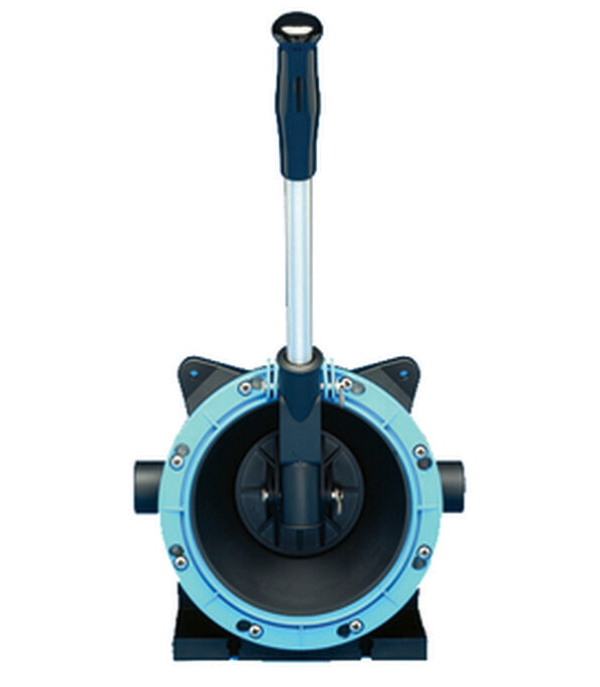
The Jabsco Amazon Universal Pump is a great option for a manual boat bilge pump. It features push-fit ports with port sizes of 1.5 inches.
Manual and hand operated pumps can save you and your boat in the case of loss of power. Sportfishing breaks down how useful a hand pump can be in the case of an emergency.
3. Automatic vs. Non-Automatic Bilge Pumps
Automatic bilge pumps can be programmed to come on at pre-set intervals. These are a great choice for boats that regularly spend time connected to shore power.
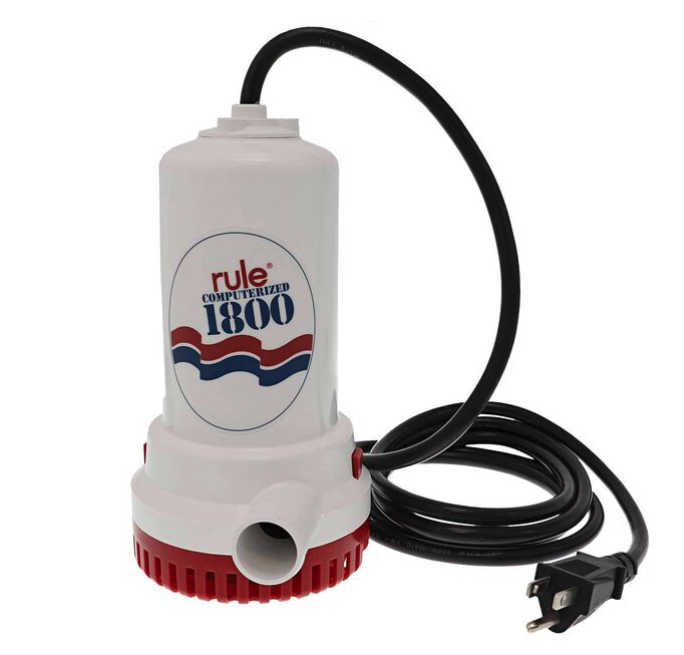
The Rule 1800 GPH Automatic Bilge Pump, 110V is a notable option. It is computerized with programmable interval options. With a capacity of 1800 gallons per hour, this pump is ideal for larger recreational boats that regularly hook up to shore power or use a generator.
The pump runs on alternating current (shore power) and comes with a 24’ AC cord. It is computer-controlled and does not require an external float switch for operation. Bilge pumps with float switches are another form of automatic bilge.
Non-automatic bilge pumps are those that are not programmed to run at set intervals but instead are activated manually by a switch at the helm. The Rule 2000 GPH Electric Bilge Pump is an example of a non-automatic bilge pump. It features high capacity, supports dry run protection, and is available in 12V and 24V options.
Selecting a Bilge Pump for Your Boat
When it comes to selecting the right bilge pump for your boat, there are many factors to consider.
1. How big of a bilge pump do I need?
Bilge pumps are measured by capacity. This is expressed in terms of gallons of water pumped per hour. The higher this number, the more powerful the pump.
The larger your boat and the greater the volume of the area that potentially needs to be evacuated of water, the larger the size pump you’ll need. You might imagine that smaller boats need less powerful bilge pumps, but they also need to take on less water to experience a large problem. So smaller boats might actually consider a pump of at least 500 gallons per hour. Sailboats, or those with larger internal spaces, might need more bilge pump capacity than longer boats with smaller internal compartments.
As a general rule, smaller boats up to 22 feet should consider a bilge pump of 700 gallons per hour. Powerboats in the range of 24-26’ should consider 700-1,100 gallons per hour.
Larger boats require greater bilge pump capacity. The specifics will vary with the setup of your boat, but consider this a guide: boats to 30’ consider bilge pump capacity of 800-1,200 gph, 30-35′ 1,000-1,600, 35-40’ 1,600- 2,300.
2. Factors to consider when choosing
When choosing the right boat bilge pump, you’ll consider the following variables:
- The size of your boat—and how much water the bilge pump could be required to expel in the case of emergency.
- The dimensions of the compartment where you will install the pump—you’ll want to make sure that the pump will fit.
- Be sure to match the voltage requirements of the pump to that of your boat’s battery system or shore power setup.
- Are you most comfortable with an integral float switch or will you install an external float switch?
Installation and Maintenance
1. Where are bilge pumps located on a boat?
Located in the lowest part of the boat, a bilge pump is designed to evacuate water from the interior of the hull. The water pumped out of the bilge may be from rain, washdown, spray from the ocean that enters while running, or in the event of an emergency, your bilge pump is the piece of equipment that can stand between your boat sinking or maintaining buoyancy.
The type, size, and number of bilge pumps that your boat needs depends on the type of vessel you operate. On larger boats, or those with multiple compartments, an adequate bilge pump setup likely requires a separate pump in each compartment that could collect water.
2. How to install a bilge pump
To maximize its functionality, you’ll want to install your bilge pump as low as possible. In addition, you’ll want to keep your discharge hoses as short as possible—the greater the distance that water has to travel, the less powerful your pump will be.
You’ll also want to use a smooth bore hose for the intake and discharge. This reduces friction and improves function. Be sure to follow manufacturer guidelines for wiring and hardware components. You’ll also want to use waterproof butt connectors to protect the wiring components.
3. Maintenance tips for longevity
As with most things, proper maintenance can improve the performance and shelf life of your bilge pump. Here are some tips:
- Inspect wiring periodically. This is important with anything in saltwater.
- Check for leaks that could expose your bilge, and your bilge pump, to excess water. Using bilge cleaner and keeping the compartment clean can help with leak detection.
- Check impeller and discharge hoses periodically.
- Clean the pump regularly- removing sediment and build-up can help your bilge pump last longer.
How and When to Use a Bilge Pump
Every boat should have a bilge pump. Many consider them among the most important pieces of safety equipment on the water.
1. When should you turn on a bilge pump?
Your bilge pump should operate anytime there is excess water in the bilge. Float switches are positioned at the level of water that should activate the pump.
The Albin Bilge Monitor system allows you to check bilge water and battery levels on your smartphone. Such systems are a great way to know how your pump is performing and when you need to turn on the boat bilge pump.
2. Steps for proper usage
Bilge pump usage is largely defined by the type of pump. Automatic pumps and those with float switches should come on at pre-set intervals or when water in the bilge reaches the level of the switch.
Panel switch-operated bilge pumps should be activated to remove water as needed. Manual pumps are much the same. If your boat has multiple compartments that could collect water, you might consider a bilge pump for each compartment.
Troubleshooting Common Issues
If your bilge pump is experiencing problems, check for these common issues:
- Power issues related to faulty wiring or battery problems.
- Clogged intakes—if debris or sediment clogs the intake, your boat bilge pump will experience restricted flow and lower performance.
- Restricted discharge flow- check that the hoses are clear or debris and kinks
- Be sure that your discharge hose is high enough above the water line to avoid siphoning
If your boat bilge pump is still experiencing problems after checking for these common problems, you might consider replacing it. Remember, the bilge pump is one of the most important pieces of safety equipment on the water. Make sure that yours is properly set up for your boat, well maintained and in good working order.
About the Author:
Elliott Stark is the author of The Book on Travel Fishing. He publishes FishTravelEat.com and has fished on four continents.

